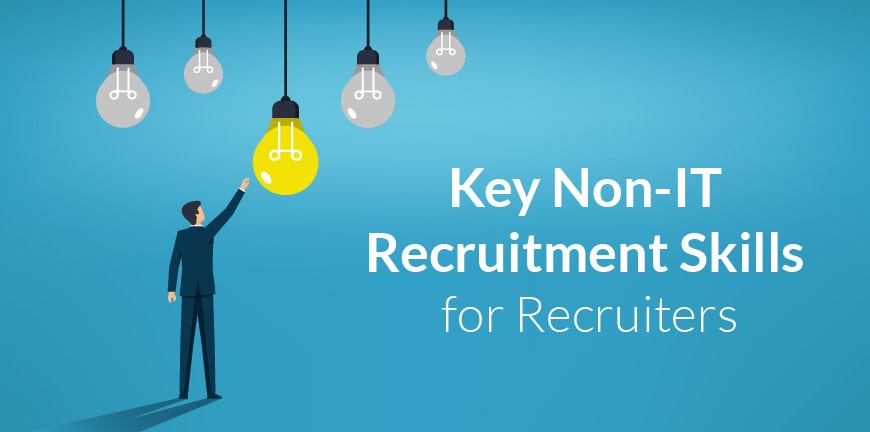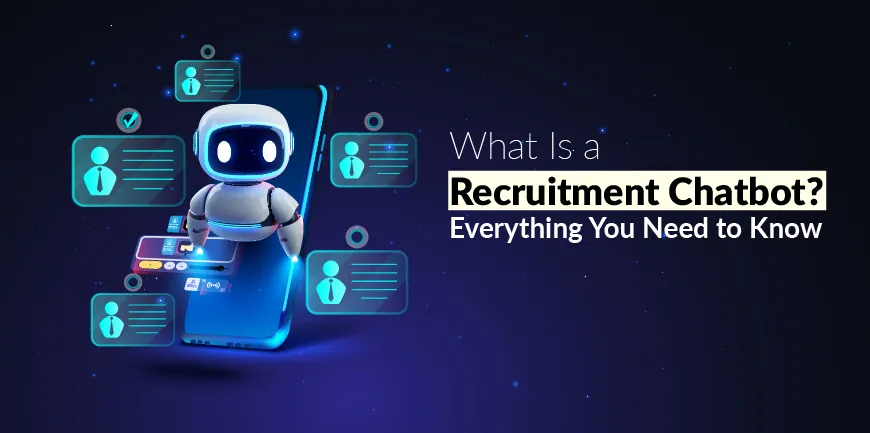
Payroll Manager Job Role | Duties & Responsibilities
15/09/2025
Top 8 IT Staff Augmentation Trends [2025 Industry Insights]
15/09/2025Imagine your company has had a breakthrough and has won a huge contract, demanding fifty new hires in just 20 days. Sure, your HR team can pore over thousands of candidates, source, screen, and interview them around the clock, but can they guarantee you that many? It’s improbable. Mass hiring is ideal in such situations, as it helps you hire a large number of individuals, allowing you to scale your operations. Any business, regardless of its size, can benefit from the approach.
What is Mass Hiring? Meaning
Mass Hiring is a hiring approach where a large number of employees are hired swiftly to help companies scale their workforce and meet sudden increases in operations, business expansion, or seasonal spikes. Unlike traditional hiring, which prioritizes filling one crucial position, this approach fills multiple roles simultaneously across various departments and job levels.
When Do Companies Require Mass Hiring?
Mass hiring is an ideal approach when companies are looking to expand their organization, have multiple outlets, have a project that requires extra workforce, or are seeking to accelerate their production or sales. Benefits of mass hiring go beyond filling vacancies. Direct sourcing through mass hiring can help expedite the hiring process and reduce hiring costs by up to 30%. Companies that are looking to fill roles across various levels and departments, from entry-level positions to senior roles and from sales to IT roles, can significantly benefit from mass hiring.
According to LinkedIn’s 2025 Global Talent Trends survey, 42% of organizations report that mass hiring helped them quickly gain market share after a merger, while 68% saw improvement in overall workforce diversity.
Mass Hiring Process
1. Planning
The first step is always the most critical. It involves figuring out the number of positions that must be filled immediately, the skills required for the positions, and the timeline for hiring.
2. Sourcing candidates
To source candidates, job advertisements are posted on relevant job portals, social media platforms, and potential candidates can be engaged through personalized messaging on these platforms to find the most suitable candidates.
3. Screening and selecting relevant candidates
Upon receiving a large number of relevant applications, these candidates are screened based on the role requirements, and the most suitable ones are shortlisted for further detailed assessment.
4. Assessments and interviews
Candidates with the best profiles are then either given skill tests virtually or physically, as per their convenience, and are assessed for their suitability for the role. This is followed by an interview process to make the final selection.
5. Job offers
The final selected candidates are extended job offers, and the terms of the contract are negotiated to ensure both parties are on the same page before onboarding the candidates.
6. Onboarding
In the mass hiring process, the new hires are introduced to the company culture through an orientation program. Here, they are made aware of their roles and responsibilities and are integrated into their respective teams.
What are the Benefits of Mass Hiring?
Mass hiring benefits companies in various ways.
- Fast filling of vacant positions and scaling up of team strength
- Reduces the time and costs required to fill multiple positions
- Gives companies a choice to hire from a large pool of candidates
- Ensures hiring of the most suitable candidates for the various open roles.
- Helps companies scale up their workforce quickly by addressing large talent requirements in the shortest time possible
- Simplifies logistics with a centralized hiring process
- The assessment procedure will be of a similar format for all the candidates as they are hired at once, ensuring no bias.
- During mass hiring, recruiters automatically gather profiles of candidates with similar skills and experiences to ensure a better fit for the role.
- It is an inclusive and diverse approach that allows hiring of individuals with different backgrounds, experiences, etc.
- Speeds up the hiring process.
- Allows companies the time to focus on their core tasks that lead to profitability and enhanced operations.
Challenges in Mass Hiring and How to Overcome Them
Here are five challenges encountered by companies while conducting mass recruitment and solutions to overcome each of them:
1. Maintaining the quality of hires
To fill various positions simultaneously, sometimes, the quality of candidates may be compromised. Quality means the candidate may not possess the exact right skills or experience for the role or may be misjudged during the hiring process.
Solution: Proper evaluation of candidates to ensure they have the right skills and experience with the proper assessments.
2. Efficient screening of candidates
During mass hiring, recruiters go through so many applications in a short time. Identifying candidates with relevant skills and not missing out on potential candidates can be challenging during this time.
Solution: Robust screening measures, like pre-screening assessments, when implemented, can help ease the selection process.
3. Ensuring a good candidate experience
During mass hiring, recruiters must simultaneously be in touch with many candidates. In that effort, they may fail to provide them with a good candidate experience by either not communicating properly or keeping them in the loop during the process.
Solution: Sending personalized messages to candidates and encouraging feedback may help the candidate feel more satisfied about accepting the job offer.
4. Managing multiple processes
There are a lot of processes that recruiters are simultaneously juggling while recruiting individuals in bulk, like interviewing them, screening a few, and onboarding some. They must have excellent management skills to ensure all of it is done efficiently.
Solution: Proper planning beforehand and using the correct project management tools can help manage all the processes efficiently.
5. Legal compliance
Mass hiring involves the recruitment of candidates from even different countries or regions. Now every country may have its own employment rules and regulations. Adhering to these laws can be challenging if the recruiter lacks the necessary knowledge.
Solution: Handing over this responsibility to a compliance expert, such as Alp Consulting, would be ideal, as we possess the experience and expertise to handle all legal challenges.
6. Retaining employees
Post the mass recruitment process, sometimes it so happens that some of the candidates may decide to leave not long after being recruited, reasons being hindrance of growth, unable to adjust to the company culture, or feeling left out.
Solution: assigning suitable mentors to these candidates and providing them with handsome compensations and making sure they feel welcomed and that their opinions matter by fostering open communication may help.
What are the Best Practices for Successful Mass Hiring?
1. Partner with a reputable RPO provider
Instead of burdening the in-house team with the rigorous task of mass hiring, partnering with a reputable RPO agency like ALP Consulting is one of the best mass hiring strategies that offers immediate scalability with relatively lower investment. Additionally, the RPO service provider has the capabilities to ensure quality hires even for bulk requirements and maintain compliance with labour laws and regulations at the same time.
2. Deploy AI-Driven Screening Technology
One of the latest bulk hiring methods that companies can implement is integrating AI-driven screening technology during a bulk recruitment drive. AI automates large-scale candidate shortlisting by analysing resumes for skills, experience, and cultural fit within seconds through ATS checkers.
3. Design High-Volume Candidate Engagement Models
High-volume candidate engagement models focus on personalized communication, automated updates, virtual interactions, and feedback loops. This ensures large and diverse applicant pools stay informed, valued, & connected throughout the bulk recruitment journey, improving candidate experience and retention.
4. Create Cohort-Based Onboarding
Upon accomplishing mass hiring and ensuring candidates are hired for different job positions, the HR team can create mass onboarding sessions to ensure selected candidates feel welcomed into the organisation and start their journey on a positive note. This approach also reduces onboarding expenses, which would have increased if the company had adopted an individual onboarding program for every candidate.
5. Virtual Job Fairs
Online career fairs allow companies to connect with thousands of candidates simultaneously through chat, video interviews, & digital assessments, making it easy to carry out bulk hiring in HR with relatively lower investment and resources.
6. Campus Hiring Drives
Companies can partner with top technical and non-technical universities & colleges across the country to recruit fresh graduates in bulk, ensuring a steady pipeline of entry-level talent. This is one of the best mass hiring strategies when it comes to getting access to young talent across domains.
7. Communication Automation Platforms
Maintaining a constant line of communication with that many candidates is difficult, but it can be done by automating some parts of it. With the help of chatbots, email reminders, etc, communication can be made easy, improving candidate experience.
8. Social Media Campaigns
Companies need to go all out with their ad campaigns because here it’s not about hiring just one or two candidates but hiring many at once. LinkedIn, Instagram, and Facebook can attract high volumes of candidates within specific demographics.
Key Takeaways
- With a mass hiring facility, companies can easily scale their operations as they can employ many candidates all at once.
- By utilizing AI tools, screening of many resumes is not just made easier but also accurate, faster, and efficient, resulting in better quality of candidates.
- Healthy candidate engagement can ensure better retention as well as lower dropouts post the recruitment process.
- Employer branding at scale builds trust, showcasing inclusivity, culture, and career opportunities during recruitment.
- Data-driven workforce planning ensures optimal staffing, aligning bulk hiring with business growth and compliance.
Frequently Asked Questions
1. What does mass hiring mean?
Mass hiring involves sourcing, screening, interviewing, and onboarding multiple candidates simultaneously to fill various roles within an organization.
2. How is mass hiring different from regular recruitment?
In regular recruitment, the recruiter focuses on finding and hiring a candidate for a specific position, whereas mass hiring involves finding, screening, and interviewing multiple candidates for multiple positions.
3. What industries commonly use mass hiring?
Healthcare, Hospitality, Retail, Manufacturing, Food, and Transportation are some of the key industries that use the mass hiring approach.
4. What are the main steps in the mass hiring process?
The main steps involve identifying the number of positions to be filled, sourcing candidates in bulk through various channels, screening and interviewing these candidates with the help of AI-assessing tools and finally offering them the job and onboarding them through mass onboarding sessions.
5. What challenges do companies face while mass hiring?
Making the right quality hires, ensuring compliance, offering proper candidate experiences, lessening drop-out rates post-hiring, and managing all the processes efficiently at the same time are some major challenges companies face during mass hiring.
6. How can technology improve mass recruitment efficiency?
Leveraging advanced recruitment technology, such as ATS integrations, automated assessments, virtual interviews, chatbots, and virtual onboarding, can streamline mass recruitment.
Contact Us For Business Enquiry

Amit Saproo
Amit Saproo is the Head of Operations at ALP Consulting with nearly 17 years of experience in Executive Search, RPO, Leadership, and IT & Engineering recruitment. He leads nationwide recruitment programs across Technology, BFSI, and R&D domains, driving strategic hiring solutions for diverse client needs. Amit excels in building and managing high-performance teams that deliver scalable, end-to-end recruitment and consulting services.




